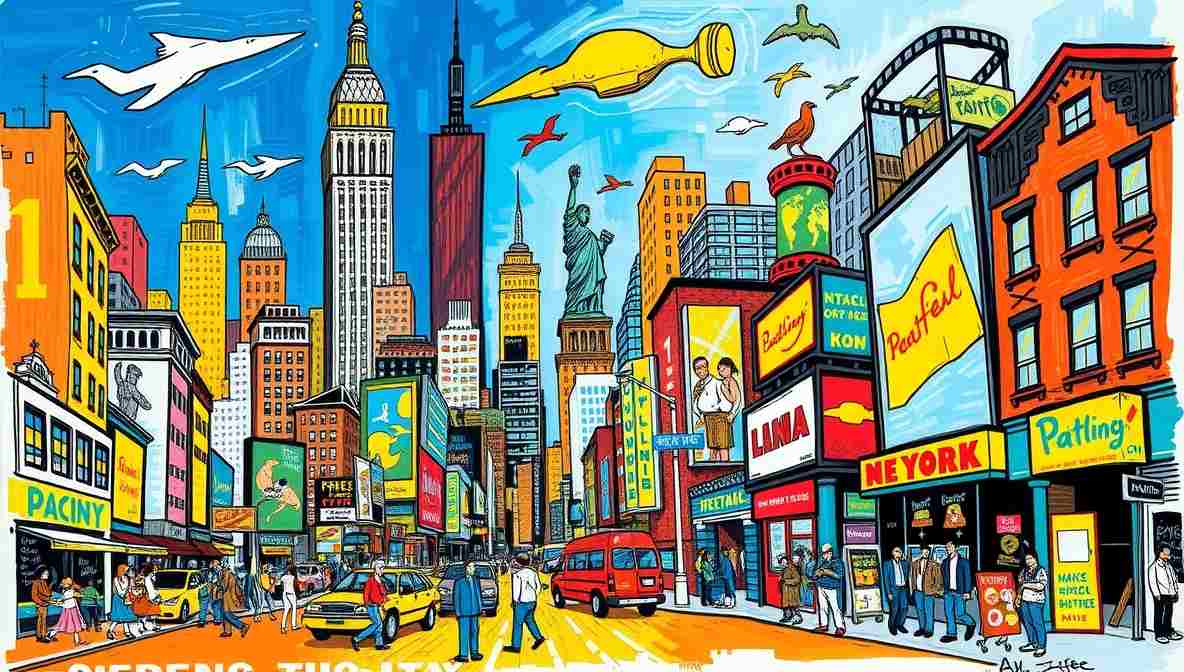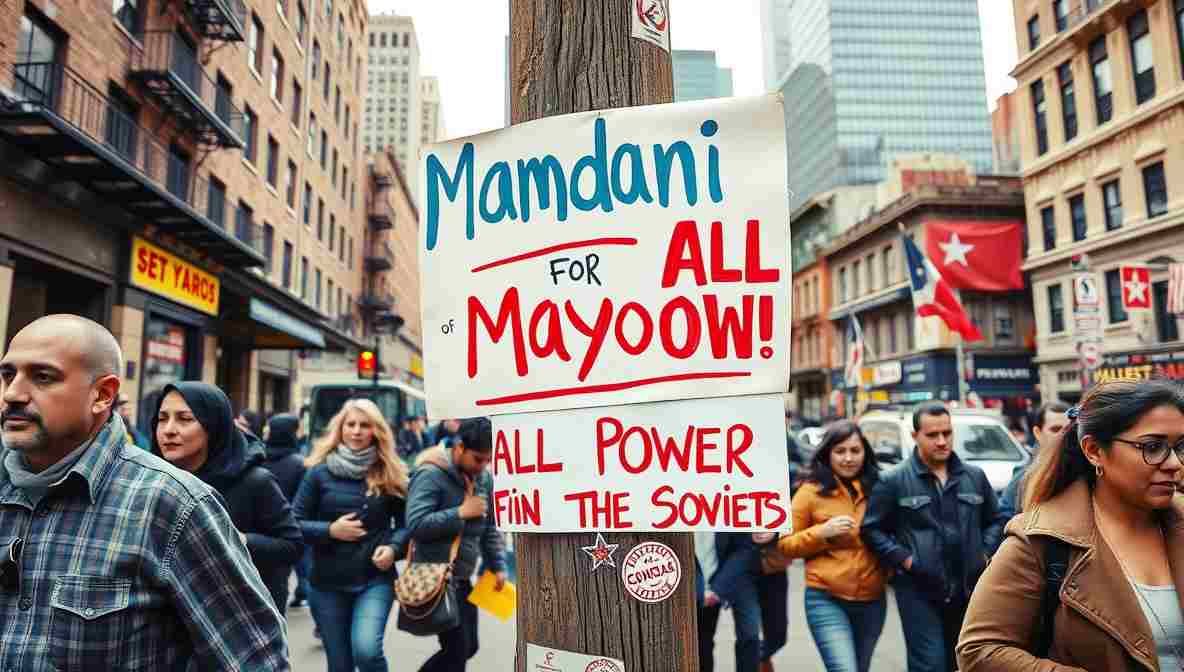Mamdani’s NYC Victory: Electoral Analysis of Progressive Breakthrough and Trump Backlash
Zohran Mamdani’s victory over Andrew Cuomo in New York City’s mayoral race represents far more than a changing of the guard at City Hall. The 34-year-old democratic socialist’s win signals a fundamental realignment in urban Democratic politics and reveals how Donald Trump’s second-term presidency is reshaping electoral coalitions in unexpected ways.
The Progressive Coalition Comes of Age
Mamdani’s triumph dismantles the conventional wisdom that has dominated New York City electoral politics for decades. His campaign assembled a coalition that political scientists will study for years: young voters who have never known a pre-recession economy, working-class communities crushed by housing costs, and established progressive organizations like the Democratic Socialists of America operating at peak organizational capacity.
The Cost-of-Living Realignment
The single most important factor in Mamdani’s victory was his relentless focus on bread-and-butter economic issues. In a city where the median rent now exceeds $3,500 per month, Mamdani’s promises of rent stabilization, public housing expansion, and fare-free public transit resonated with voters who feel economically strangled despite living in America’s wealthiest city.
This represents a sharp departure from the cultural and identity-focused messaging that has dominated progressive campaigns in recent cycles. Mamdani ran on class politics first, positioning himself as a champion of working New Yorkers against landlords, developers, and corporate interests. The strategy proved devastatingly effective against Cuomo, whose ties to real estate developers and political machine politics became liabilities in an electorate hungry for economic populism.
The Trump Backlash Effect: Motivation Without Moderation
Perhaps the most counterintuitive element of this race was how Trump’s opposition to Mamdani energized rather than deflated his campaign. The president’s repeated threats to cut federal funding if Mamdani won created a rallying point for New Yorkers who view Trump as an existential threat to their city’s autonomy.
When National Polarization Drives Local Turnout
The voter turnout figures tell the story: 2 million New Yorkers voted in a municipal election, shattering previous records. This unprecedented engagement reflected not just enthusiasm for Mamdani, but active resistance to Trump’s interference in local governance. Trump’s attacks transformed what might have been a concerning “socialist” label into a badge of anti-Trump defiance.
This dynamic contradicts the political playbook that has guided Democratic strategists since the Reagan era. Conventional wisdom holds that association with socialism dooms candidates in general elections. Yet in Trump’s second term, with the president governing further to the right and threatening blue cities, the democratic socialist label became less of a scarlet letter and more of a shield against federal overreach.
The Cuomo Dynasty’s Collapse and Machine Politics’ Decline
Andrew Cuomo’s defeat–first in the Democratic primary in June, then again as an independent in November–marks the definitive end of one of New York’s most powerful political dynasties. The former governor’s campaign represented the old guard: transactional politics, close ties to business interests, and a top-down approach to governance that once dominated New York politics.
Why Establishment Credentials Became Liabilities
Cuomo’s loss illuminates how profoundly the Democratic electorate has shifted, particularly in urban centers. His advantages–name recognition, connections to labor unions, endorsements from business leaders–proved insufficient against a candidate who could mobilize grassroots energy and speak credibly to economic anxiety.
The fact that Cuomo received nearly half the vote running as an independent demonstrates that his coalition still exists. But it’s an aging coalition, concentrated among older voters, homeowners, and moderate Democrats who remain skeptical of progressive policy prescriptions. Mamdani’s victory suggests this coalition is no longer large enough to win citywide elections, especially when younger, more diverse, and more progressive voters turn out in large numbers.
Demographic and Generational Shifts
Mamdani’s coalition reflects the demographic transformation of New York City’s electorate. His victory depended on massive margins among voters under 40, who now comprise a larger share of the electorate than in previous cycles. These voters came of age during the 2008 financial crisis, experienced crippling student debt, watched housing costs spiral beyond reach, and entered adulthood during a pandemic that exposed systemic inequalities.
The Muslim American Political Awakening
Mamdani’s identity as New York’s first Muslim mayor carries enormous symbolic and practical significance. His victory represents the political maturation of Muslim American communities that have grown exponentially in New York over the past two decades. His direct confrontation of Islamophobia during the campaign, and his promise that “no more will New York be a city where you can traffic in Islamophobia and win an election,” signals that Muslim voters now possess enough electoral power to punish candidates who engage in bigotry.
This development parallels broader shifts in American politics, where growing racial and religious diversity is reshaping electoral coalitions. Mamdani’s ability to build a multiracial, multi-faith coalition while centering his Muslim identity demonstrates that demographic change is not merely altering the electorate’s composition–it’s changing which identities can successfully claim leadership.
National Implications for Democratic Party Direction
While local factors drove Mamdani’s victory, the national implications are substantial. His win–combined with progressive victories in Virginia and New Jersey gubernatorial races–suggests that the Democratic Party’s progressive wing has moved from insurgent force to governing coalition, at least in blue states and cities.
The Progressive Governance Test Begins
Mamdani now faces the brutal reality of governing America’s largest city with limited resources and a hostile federal government. His promises of massive public housing expansion, rent stabilization, and fare-free transit require either enormous new revenue streams or dramatic reallocation of existing budgets. Trump’s threats to cut federal funding are not idle; New York City receives billions in federal aid annually.
How Mamdani governs will shape progressive politics nationally. If he successfully delivers tangible improvements in housing affordability, transit reliability, and quality of life, he’ll provide a template for progressive governance that other cities may emulate. If his administration struggles to implement ambitious promises or faces fiscal crisis, moderate Democrats will point to New York as evidence that progressive policies are unworkable at scale.
The Virginia and New Jersey Context
Mamdani’s victory did not occur in isolation. Democratic wins in Virginia and New Jersey gubernatorial races, with Abigail Spanberger and Mikie Sherrill respectively, demonstrate that anti-Trump energy remains potent in blue and purple states. However, the ideological differences between these candidates are striking.
Spanberger and Sherrill represent the moderate, national security-focused wing of the Democratic Party. Both are former intelligence officers who emphasize pragmatism over ideology. Their victories suggest that while Trump’s unpopularity helps Democrats across the spectrum, different Democratic factions dominate in different electoral contexts. Progressive democratic socialists win in deep blue cities; moderate former CIA officers win in purple states.
Geographic Sorting Accelerates
This divergence reinforces the geographic sorting that has defined American politics for two decades. Urban areas continue moving leftward, embracing candidates and policies that would be unthinkable in suburban or rural contexts. This sorting has profound implications for Democratic coalition management and for the party’s ability to compete nationally.
California’s Redistricting Power Play
The passage of California’s Proposition 50, allowing partisan redistricting to counter similar Republican efforts in Texas, represents a new phase in American electoral competition. Both parties now openly engage in strategic map-drawing to maximize partisan advantage, abandoning even the pretense of neutral redistricting.
This development, while tangential to the mayoral races, illustrates how thoroughly partisan warfare has consumed American democracy. The normalization of partisan gerrymandering in both red and blue states suggests that neither party believes it can win power through persuasion alone. Instead, both focus on manipulating electoral structures to lock in advantages.
Looking Ahead: The 2026 Midterms and Beyond
These 2025 results provide early indicators for the 2026 midterm elections. Democratic turnout remains robust in blue strongholds, suggesting that Trump’s second term continues motivating the party’s base. However, the ideological diversity of Democratic winners–from democratic socialists to moderate intelligence veterans–indicates ongoing tension about the party’s direction.
The Progressive Infrastructure Advantage
One of the most significant but underreported aspects of Mamdani’s campaign was the organizational infrastructure supporting it. The DSA’s ground game, combined with grassroots fundraising networks and digital organizing tools, allowed Mamdani to compete with Cuomo’s establishment advantages. This infrastructure doesn’t disappear after Election Day; it remains available for future progressive campaigns.
The maturation of progressive organizing capacity represents a fundamental shift in Democratic politics. Previous progressive insurgents often lacked the infrastructure to sustain campaigns or translate victories into governing power. Today’s progressive movement has built durable institutions that can recruit candidates, fund campaigns, mobilize voters, and support governance. This infrastructure makes progressive victories more likely and more sustainable.
Conclusion: Realignment or Moment?
The central question facing political analysts is whether Mamdani’s victory represents a durable realignment of urban Democratic politics or a unique moment driven by Trump backlash, economic anxiety, and an unusually weak establishment opponent.
The evidence suggests realignment. The coalition Mamdani assembled–young, diverse, economically stressed, and ideologically progressive–reflects demographic and economic trends that show no signs of reversing. Housing costs continue rising, wages remain stagnant for working-class New Yorkers, and younger voters consistently embrace more progressive positions than their predecessors.
However, governing will test this coalition’s durability. Progressive policies face implementation challenges, budgetary constraints, and inevitable compromises. If Mamdani’s administration delivers results, he may indeed represent the future of urban Democratic politics. If it stumbles, moderate Democrats will argue that progressive rhetoric exceeds progressive capacity.
What’s certain is that American politics in 2025 looks fundamentally different than it did even five years ago. The old rules–that socialism is unelectable, that establishment credentials win Democratic primaries, that national figures can dictate local outcomes–no longer apply. A new political landscape is emerging, and Zohran Mamdani stands at its leading edge.



